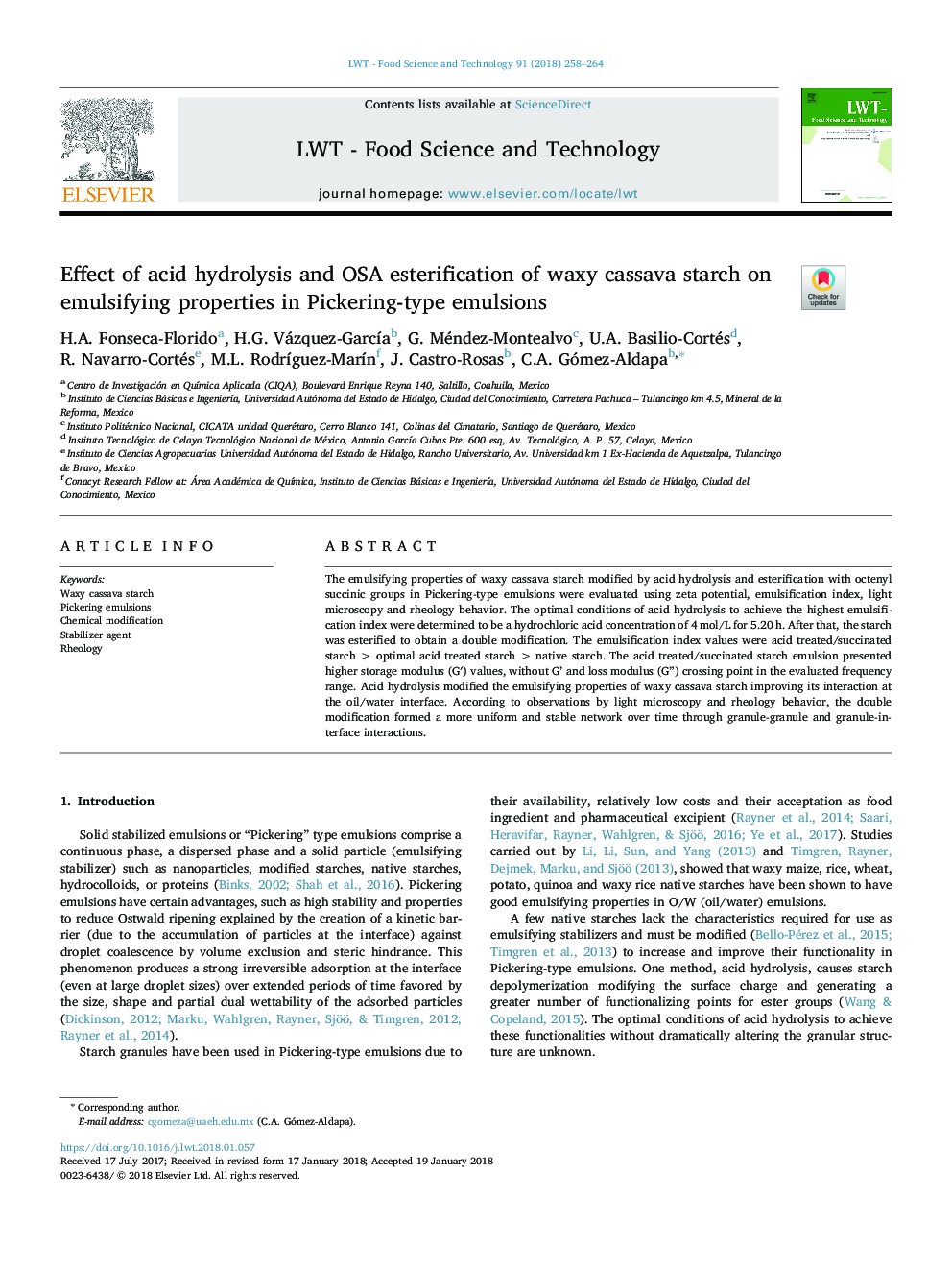| Article ID | Journal | Published Year | Pages | File Type |
|---|---|---|---|---|
| 8891671 | LWT - Food Science and Technology | 2018 | 7 Pages |
Abstract
The emulsifying properties of waxy cassava starch modified by acid hydrolysis and esterification with octenyl succinic groups in Pickering-type emulsions were evaluated using zeta potential, emulsification index, light microscopy and rheology behavior. The optimal conditions of acid hydrolysis to achieve the highest emulsification index were determined to be a hydrochloric acid concentration of 4â¯mol/L for 5.20â¯h. After that, the starch was esterified to obtain a double modification. The emulsification index values were acid treated/succinated starchâ¯>â¯optimal acid treated starchâ¯>â¯native starch. The acid treated/succinated starch emulsion presented higher storage modulus (Gâ²) values, without G' and loss modulus (G”) crossing point in the evaluated frequency range. Acid hydrolysis modified the emulsifying properties of waxy cassava starch improving its interaction at the oil/water interface. According to observations by light microscopy and rheology behavior, the double modification formed a more uniform and stable network over time through granule-granule and granule-interface interactions.
Related Topics
Life Sciences
Agricultural and Biological Sciences
Food Science
Authors
H.A. Fonseca-Florido, H.G. Vázquez-GarcÃa, G. Méndez-Montealvo, U.A. Basilio-Cortés, R. Navarro-Cortés, M.L. RodrÃguez-MarÃn, J. Castro-Rosas, C.A. Gómez-Aldapa,
